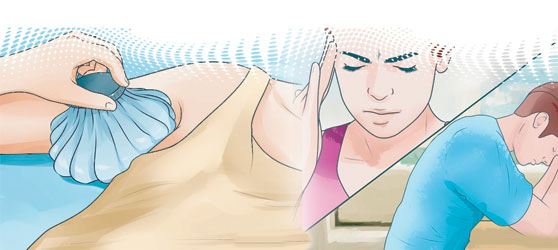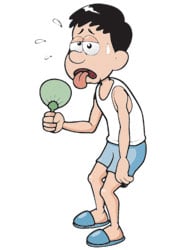Finally the time has come to bid adieus to the unusually long and fluctuating winter and its gloomy downcast days and nights; it’s time to welcome the sunshine, the fun-filled vacations, and the scrumptious and delicious fruits of summer! It’s the dichotomy of the seasons and the innumerable lovable characteristic features of each that makes the departure of one and the arrival of another worth cherishing and waiting for!
Heatstroke - beat the heat wave!
Finally the time has come to bid adieus to the unusually long and fluctuating winter and its gloomy downcast days and nights; it’s time to welcome the sunshine, the fun-filled vacations, and the scrumptious and delicious fruits of summer! It’s the dichotomy of the seasons and the innumerable lovable characteristic features of each that makes the departure of one and the arrival of another worth cherishing and waiting for! However, as much as we all are pumped up to embrace the season of sunshine, alas! the joy of the season’s arrival is also fused with the dread of one of the most difficult and the deadliest times of the year: the time of heat wave!
Blazing sun, overwhelmingly high temperatures, scorching heat are just a few of the effects of global warming the world is experiencing over the past few years. Talking about our country, we saw a huge number of fatalities over the past years at the hands of the cruel and brutal heat wave. Here we are again, hit by yet another heat wave that has put hundreds of lives at risk. Helpless in the face of the unavoidable climatic and weather changes, we are left with nothing but to prepare and equip ourselves to face the adversity.
With concrete planning and a few key steps, we can try to mitigate the effects of heat wave and save some if not all precious lives. For this purpose, we need to educate ourselves about heatstroke and familiarize ourselves with its symptoms, prevention, and treatment.
Heatstroke is a condition caused by overheating of body. It occurs due to the failure of temperature-regulating (cooling) mechanism of the body as a result of prolonged exposure to or physical exertion in high temperatures. When the cooling mechanism fails, the body temperature rises; the body temperature of the affected person goes up from 98.6 °F (37°C) to around 104 °F (40 °C) or higher. If left untreated, the condition may lead to damage to brain, heart, lungs and kidneys. Heatstroke is the most serious form of heat related injuries and is a medical emergency. Hence, it needs to be responded accordingly.
Who is at risk?
Though all of us need to take care of ourselves and of others, yet a few people are more at risk of getting heatstroke: labourers, aged people, children, sportsmen and all those who work outdoors are more prone to this horrid condition.
Symptoms
Fortunately, these are easy to detect and can alert you about the situation before it’s too late.
The characteristic symptom of heatstroke is high core body temperature, i.e. 40°C or 104°F. Secondly, the affected person’s skin may become red and dry. One of the symptoms that differentiate heatstroke from heat exhaustion is the absence of sweat in heatstroke whereas an individual will sweat profusely when suffering from heat exhaustion. (Heat exhaustion is one level less serious than heatstroke. Heat exhaustion, if left untreated, progress to heatstroke).
Other common symptoms of heatstroke are:
The person can even lose consciousness and, if left untreated, heatstroke may lead to coma and ultimately death.
Treatment
If you find someone showing these signs, call for help without any delay. Dial 115 for Edhi Ambulance or 1020 for Chipa Ambulance or 1021 for Aman Ambulance.
Meanwhile, see that the victim is provided with first aid:
Prevention
As it goes, “prevention is better than cure”. There are a few steps we can take to avoid getting heatstroke. While the obvious step is to try and minimise going outdoors to avoid heat exposure, yet, it is not always a practical and a long-term solution. Therefore, we need to take a few measures to protect ourselves amidst our activities outdoor:

While enjoying the beauty of summers, keep these points in mind to avoid any unnecessary nuisance! Happy Summers!